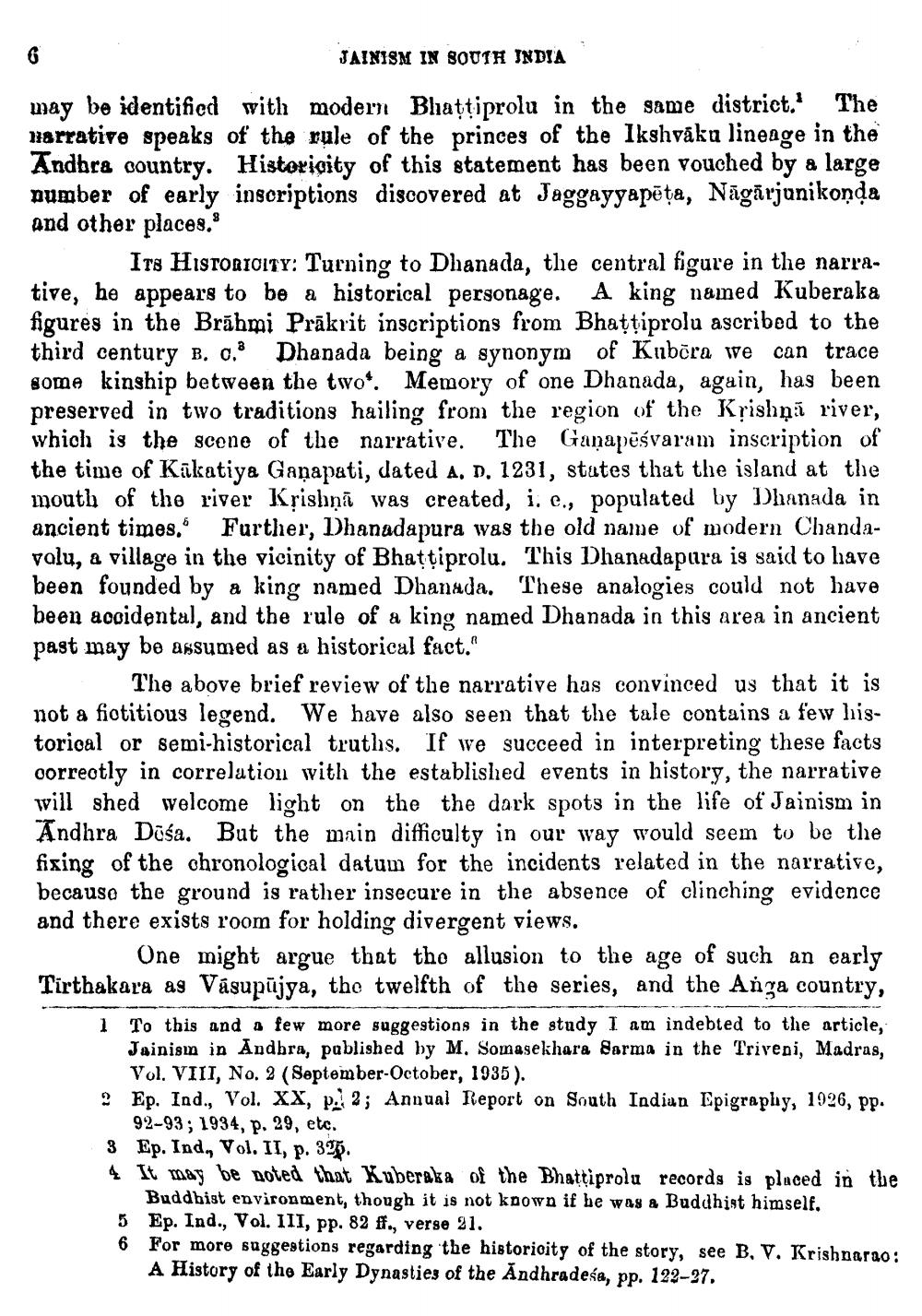________________
6
JAINISM IN SOUTH INDIA
may be identified with modern Bhattiprolu in the same district.' The narrative speaks of the rule of the princes of the Ikshvaku lineage in the Andhra country. Historicity of this statement has been vouched by a large number of early inscriptions discovered at Jaggayyapēṭa, Nāgārjunikonda and other places.3
ITS HISTORICITY: Turning to Dhanada, the central figure in the narrative, he appears to be a historical personage. A king named Kuberaka figures in the Brahmi Prākrit inscriptions from Bhattiprolu ascribed to the third century B. c.3 Dhanada being a synonym of Kubera we can trace some kinship between the two. Memory of one Dhanada, again, has been preserved in two traditions hailing from the region of the Krishna river, which is the scene of the narrative. The Ganapesvaram inscription of the time of Kakatiya Ganapati, dated A. D. 1231, states that the island at the mouth of the river Krishna was created, i. e., populated by Dhanada in ancient times." Further, Dhanadapura was the old name of modern Chandavolu, a village in the vicinity of Bhattiprolu. This Dhanadapura is said to have been founded by a king named Dhanada. These analogies could not have been accidental, and the rule of a king named Dhanada in this area in ancient past may be assumed as a historical fact."
The above brief review of the narrative has convinced us that it is not a fictitious legend. We have also seen that the tale contains a few historical or semi-historical truths. If we succeed in interpreting these facts correctly in correlation with the established events in history, the narrative will shed welcome light on the the dark spots in the life of Jainism in Andhra Dusa. But the main difficulty in our way would seem to be the fixing of the chronological datum for the incidents related in the narrative, because the ground is rather insecure in the absence of clinching evidence and there exists room for holding divergent views.
One might argue that the allusion to the age of such an early Tirthakara as Vasupujya, the twelfth of the series, and the Anga country,
1 To this and a few more suggestions in the study I am indebted to the article, Jainism in Andhra, published by M. Somasekhara Sarma in the Triveni, Madras, Vol. VIII, No. 2 (September-October, 1935).
2 Ep. Ind., Vol. XX, p. 2; Annual Report on South Indian Epigraphy, 1926, pp. 92-93; 1934, p. 29, etc.
3 Ep. Ind., Vol. II, p. 325.
4 It may be noted that Kuberaka of the Bhattiprolu records is placed in the Buddhist environment, though it is not known if he was a Buddhist himself.
5 Ep. Ind., Vol. III, pp. 82 ff., verse 21.
6 For more suggestions regarding the historicity of the story, see B. V. Krishnarao: A History of the Early Dynasties of the Andhradeśa, pp. 122-27.




